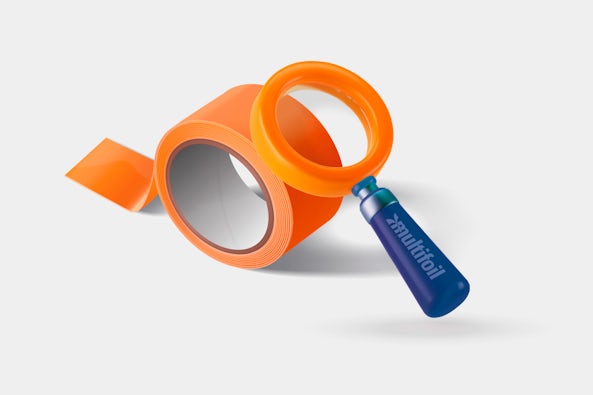Experts in bonding!
At our company, we have a dedicated focus on delivering self-adhesive tapes specifically designed for the professional market in various industries. With a strong foundation in engineering and manufacturing, we excel at creating customized solutions that cater to a wide range of industrial applications. Our primary goal is to build enduring relationships with our valued customers by offering exceptional bonding solutions that exceed the demands of the market.

Smart adhesive
solutions
Multifoil is a company that focuses on creating and manufacturing self-adhesive tapes suitable for a diverse range of industries and applications.
Our passion lies in delivering impeccable solutions to all of your professional bonding challenges.

Quality first
We strive to ensure superior quality across all aspects of our operations, including raw materials, product development, testing, and service delivery. Our commitment to excellent quality means you can always expect the very best from us.
More information
We recognize the challenges of selecting the right tape, as it often involves extensive effort.
Let us do the work!


Projects & Developments
With our in-house laboratory, highly skilled R&D team, and 35 years of production expertise, we are fully equipped to deliver the optimal customized outcome. Our commitment to quality and innovation ensures that we have the resources and know-how to exceed your expectations.

Production facilities
We are confident that we have the necessary machinery to tackle a withe range of challenges with our 5 coating lines and more than 20 converting machines. Allow us to demonstrate our ability to handle your requirements effectively.
Our promise
We have the advantage of possessing an in-house laboratory, a proficient R&D team, and 4 decades of production know-how. This enables us to engineer and produce the most optimal long-term results for you.
At our company, we strive to provide excellence in all aspects of our operations, including the sourcing of high-quality raw materials, the manufacturing of top-notch products, rigorous development and testing processes, and outstanding service delivery to our valued customers. Rest assured that our commitment to quality is unwavering.
We understand that collaborating towards a solution and sharing your knowledge, developments and market insight can be a daunting task. However, please be assured that we value integrity and trust above all else in our work with you. Any confidential information you share with us will be kept strictly confidential and if needed we will be happy to sign an NDA. Let's work together towards finding the best solutions for your needs.
Long-term relationships can seem almost inevitable when bonding is the foundation of your company. We are fortunate that many of our valued customers, both large and small, choose to stay with us for extended periods, often until the end of their application. Equally important to us are our suppliers, to whom we remain loyal, just as our customers remain loyal to us. And finally, our team - once you become part of our ‘sticky’ group, it's challenging to break away.
We take pride in our production facility, equipped with over 20 high-performing converting machines and 5 coating lines for rubber and acrylic. Our team is equally impressive, boasting an average tenure of 14 years, and they are more than capable of tackling any challenge thrown their way. Our shared passion for excellence makes working together a joy, and you will undoubtedly feel this sense of enthusiasm and commitment when collaborating with us.
With our expansive warehouse stocked with finished products and raw materials, we guarantee on-time delivery that precisely matches your specifications. In addition, we can fulfill call-off orders, granting you access to your products exactly when you need them. Our delivery and service team has years of international experience and is eager to assist you in any way they can.

